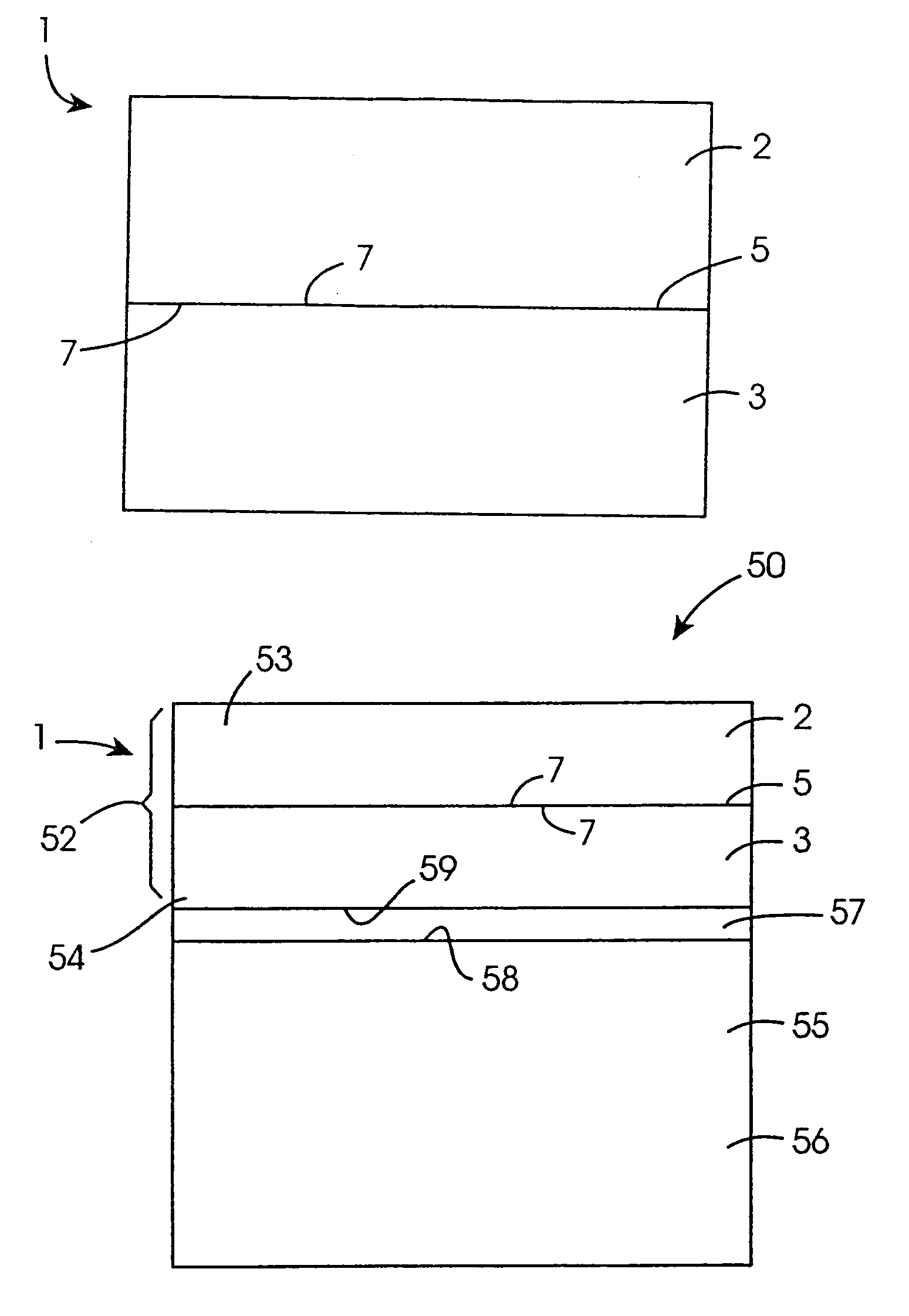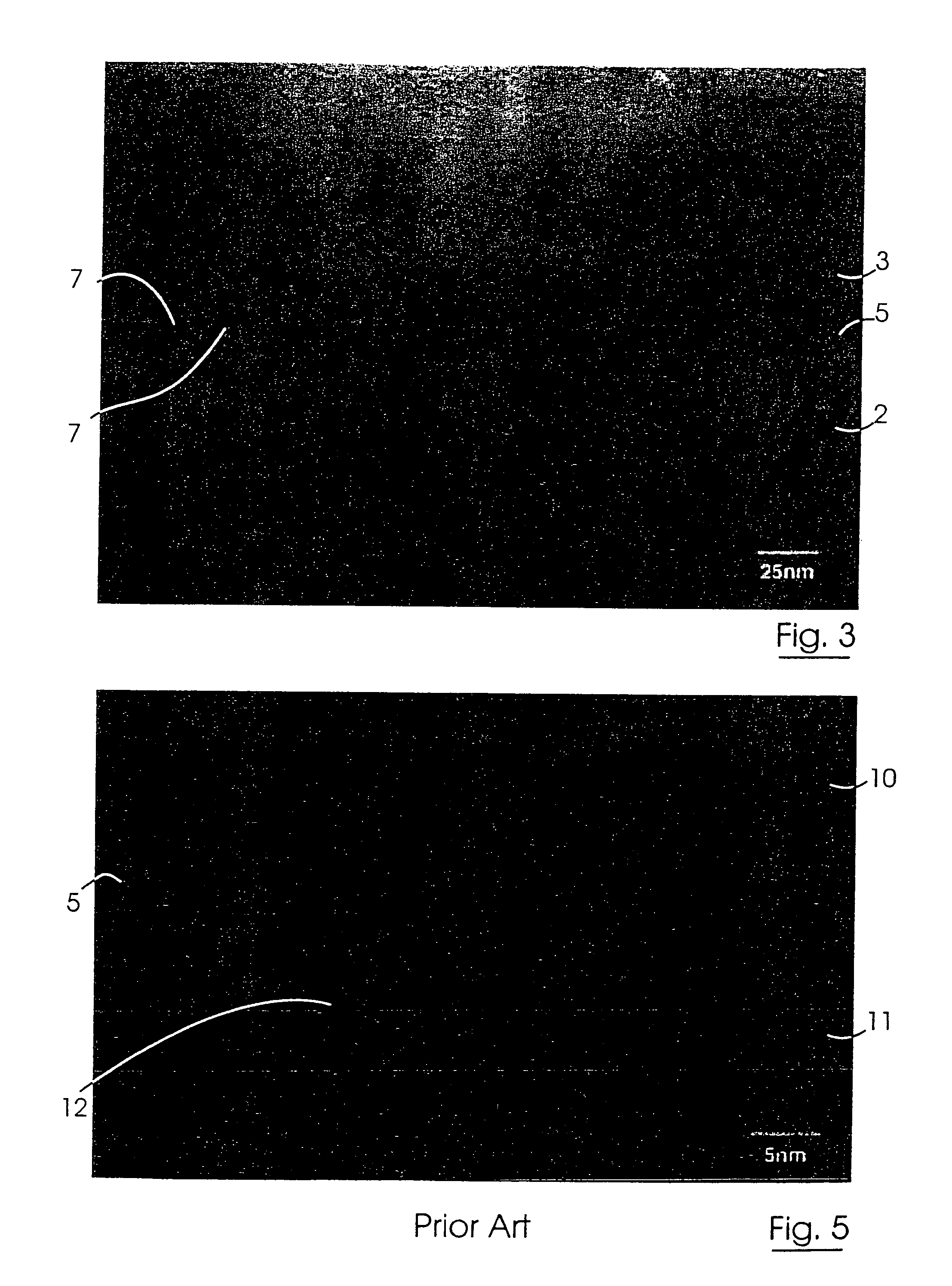Method for direct bonding two silicon wafers for minimising interfacial oxide and stresses at the bond interface, and an SOI structure
a technology of interfacial oxide and bond interface, which is applied in the direction of semiconductor/solid-state device manufacturing, basic electric elements, electric apparatus, etc., can solve the problems of reducing the operating efficiency of semiconductor bipolar devices subsequently formed, reducing the operating efficiency of semiconductor bipolar devices, and preparation of semiconductor substrates, so as to minimise interfacial stresses, reduce the variation of resistivity, and eliminate crystal dislocations
- Summary
- Abstract
- Description
- Claims
- Application Information
AI Technical Summary
Benefits of technology
Problems solved by technology
Method used
Image
Examples
Embodiment Construction
[0102]Referring to the drawings and initially to FIGS. 1 and 2, there is illustrated a semiconductor substrate according to the invention, indicated generally by the reference numeral 1. The substrate 1 comprises a pair of silicon wafers, namely, a first wafer 2 and a second wafer 3 both of single crystal silicon, which are bonded directly together along a silicon / silicon bond interface 5, along which interfacial oxide and interfacial stresses are minimised. By minimising interfacial stresses along the bond interface 5, crystal dislocations at and near the bond interface 5, which would otherwise result from such interfacial stresses are minimised and effectively eliminated. The substrate 1 is particularly suitable for forming electronic components, for example, bipolar devices, PIN diodes and insulated gate bipolar transistors, and indeed, any other electronic components which require two silicon layers of respective different electrical characteristics, and in particular, two layer...
PUM
 Login to View More
Login to View More Abstract
Description
Claims
Application Information
 Login to View More
Login to View More - R&D
- Intellectual Property
- Life Sciences
- Materials
- Tech Scout
- Unparalleled Data Quality
- Higher Quality Content
- 60% Fewer Hallucinations
Browse by: Latest US Patents, China's latest patents, Technical Efficacy Thesaurus, Application Domain, Technology Topic, Popular Technical Reports.
© 2025 PatSnap. All rights reserved.Legal|Privacy policy|Modern Slavery Act Transparency Statement|Sitemap|About US| Contact US: help@patsnap.com



